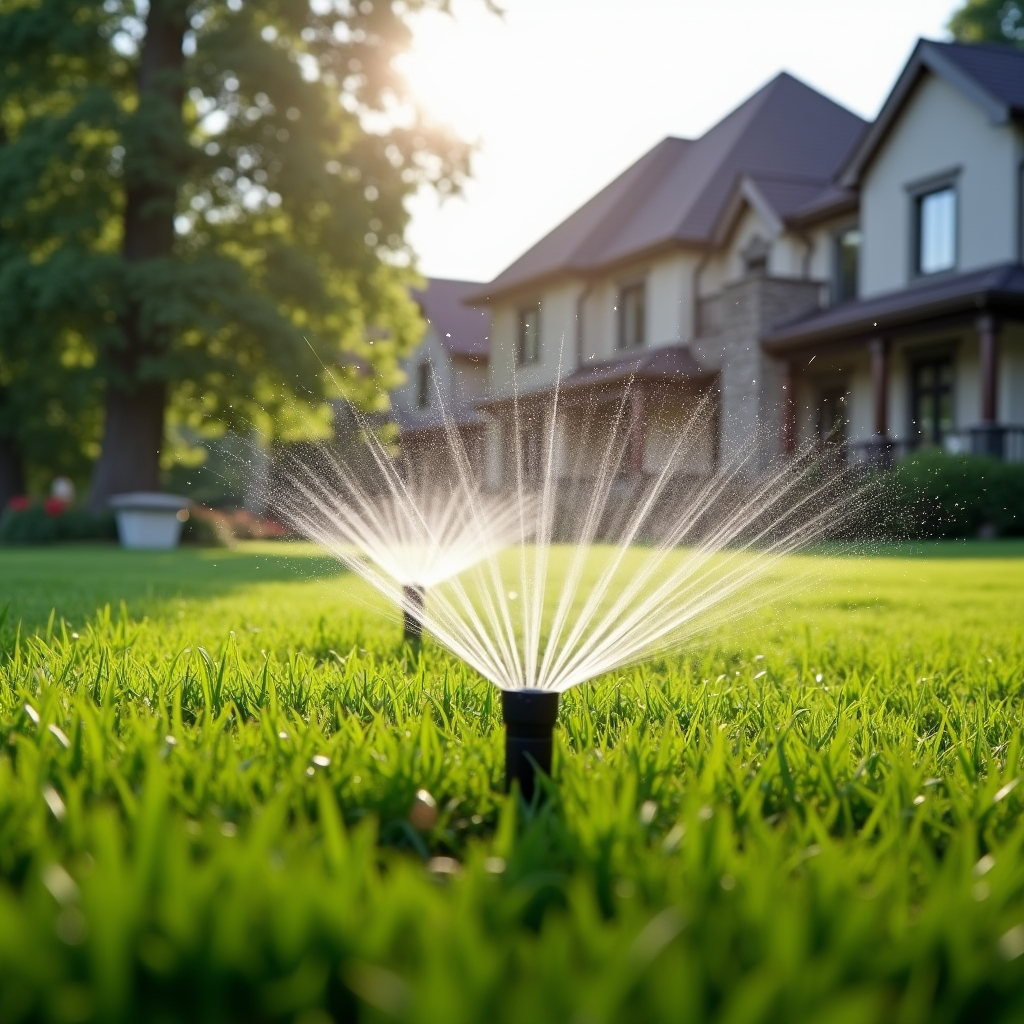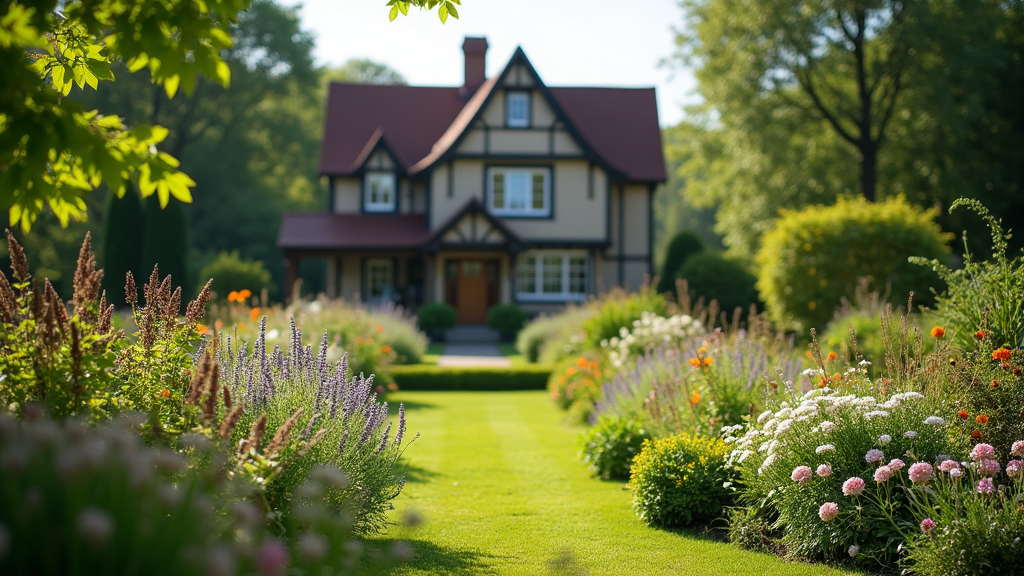Introduction
In today's world, where our daily lives often feel hurried and chaotic, outdoor spaces have become sanctuaries of peace and inspiration. Landscape design has evolved dramatically, transcending mere aesthetics to become an essential part of our connection with nature. One innovative trend that has emerged in this realm is the incorporation of art into landscaping. Imagine a garden not just as a collection of plants but as a vibrant canvas filled with sculptures, murals, and functional art pieces that transform your outdoor space into a delightful experience.
In this comprehensive guide, we will delve into the multifaceted relationship between art and landscape design, particularly focusing on how you can seamlessly integrate artistic elements into your outdoor areas. Whether you're working with a spacious yard or a cozy balcony in North Carolina, the techniques we explore will inspire you to elevate your surroundings creatively.
Understanding Landscape Design
What is Landscape Design?
Landscape design is an art and science that combines environmental stewardship with aesthetic beauty. It involves planning and creating outdoor spaces by considering various elements like plants, structures, water features, lighting, and now—artistic installations.
The Importance of Landscape Design
Good landscape design enhances property value and creates inviting environments for relaxation and entertainment. It provides crucial ecological benefits such as erosion control and wildlife habitats while also promoting well-being through contact with nature.
Key Elements of Effective Landscape Design
Functionality: Outdoor spaces should serve their intended purposes. Aesthetics: A visually appealing landscape uplifts moods. Sustainability: Using native plants helps conserve water and supports local ecosystems. Artistic Integration: Adding art creates unique focal points that tell a story.Incorporating Art into Your Outdoor Spaces through Landscaping
When diving deep into the topic of "Incorporating Art into Your Outdoor Spaces through Landscaping," it becomes essential to understand how artwork can enhance both visual appeal and functionality within your garden or patio area.
Choosing the Right Art for Your Space
Consider Size and Scale
When selecting artwork, consider the scale relative to your landscape design. Oversized sculptures may overwhelm small gardens while tiny pieces could get lost in expansive yards.

Material Matters
Different materials evoke distinct feelings—stone conveys permanence while metal suggests modernity. Choose materials that resonate with your overall theme.
Theme Consistency
Your chosen art should harmonize with existing elements in your landscape design North Carolina style—think rustic sculptures alongside natural stone paths or sleek metal art in contemporary settings.
Types of Art to Incorporate in Landscaping
Sculptures: From classical statues to abstract forms; sculptures can act as focal points. Murals: Painted walls or fences can add color and personality. Garden Furniture: Artistic benches or tables add both function and flair. Water Features: Fountains or ponds designed artistically enhance tranquility. Light Installations: Creative lighting can transform your space at night.Creating Focal Points with Artful Installations
Why Focal Points Matter in Design?
Focal points draw the eye, guiding visitors through the space while providing visual interest. An effective focal point can be an exquisite sculpture or a strategically placed piece of garden furniture adorned with artistic flair.
Selecting Strategic Locations for Art Pieces
- Entryways Garden centers Hidden corners Near seating areas
Consider how people will interact with these artworks—will they sit beside them for contemplation or merely admire from afar?
Enhancing Outdoor Spaces with Functional Art
Functional art serves dual purposes—it’s beautiful yet practical! Here are some examples:
Planters as Sculptures: Choose uniquely designed planters that serve as artistic features while housing flowers. Artistic Walkways: Mosaic paths made from colorful tiles elevate even mundane pathways to stunning artworks. Creative Lighting Solutions: Light fixtures designed artistically illuminate your space while adding character.Integrating Nature with Artistic Elements
Nature itself is an incredible source of inspiration! By combining natural elements—such as trees, flowers, rocks—with man-made art forms, you create synergy between the organic world and human creativity.
Using Natural Materials for Artistic Expression
Incorporate natural stones or driftwood into sculptures to blend seamlessly with landscapes without appearing forced or out-of-place.
Floral Artwork Techniques
Planting flowers strategically can create patterns resembling paintings when viewed from above—a living mural!
Exploring Local Artists for Unique Creations
North Carolina boasts many talented artists who specialize in outdoor installations that reflect local culture and environment:
- Collaborate on custom pieces tailored specifically to suit your landscape needs. Attend local fairs showcasing regional talent; discover one-of-a-kind artworks perfect for your garden!
Maintaining Your Artistic Landscapes Over Time
Preserving Artwork from Weather Elements
Protect sculptures from harsh weather conditions using appropriate sealants or shelters when necessary; this ensures longevity without compromising aesthetics.

Seasonal Changes Affecting Artwork Visibility
Be mindful of seasonal shifts influencing plant growth around artworks—their visibility changes throughout different times of year!

FAQs
1. What types of art are best suited for outdoor spaces?
Outdoor-friendly materials like stone, metal, wood resistant to weather are ideal choices for art pieces intended for exterior display.
2. How do I choose colors that complement my landscaping?
Consider using color palettes inspired by surrounding flora—harmonizing hues enhance overall aesthetics rather than clash against nature's beauty!
3. Can I create my own artwork?
Absolutely! DIY projects allow personal expression; consider painting pots or http://connerolvr796.raidersfanteamshop.com/tips-for-integrating-technology-into-your-yard-s-illumination constructing small sculptures using found materials around your home.
4. What are some tips for positioning artwork?
Aim for balance! Place larger items centrally while smaller accents fill gaps around them; varying heights creates visual interest too!
5. How do I incorporate lighting into my artistic designs?
Strategically placed lights highlight key features during nighttime hours—consider uplighting sculptures or downlighting over seating areas!
6. Should I hire a professional landscaper?
While DIY projects can be fulfilling hiring professionals knowledgeable about landscape design North Carolina will ensure successful integration of artistry within planned layouts!
Conclusion
Incorporating art into your outdoor spaces through landscaping is more than just beautifying an area; it reflects personal stories while fostering deeper connections between individuals and their environments. As you embark on this creative journey within your own gardens or yards take time exploring various artistic styles—from vibrant murals celebrating local culture to elegant sculptures harmonizing seamlessly among flourishing flora!
Remember—the ultimate goal remains enhancing both pleasure derived from spending time outdoors as well as creating thoughtful expressions celebrating life outside walls! So roll up those sleeves get started transforming ordinary landscapes extraordinary ones today!